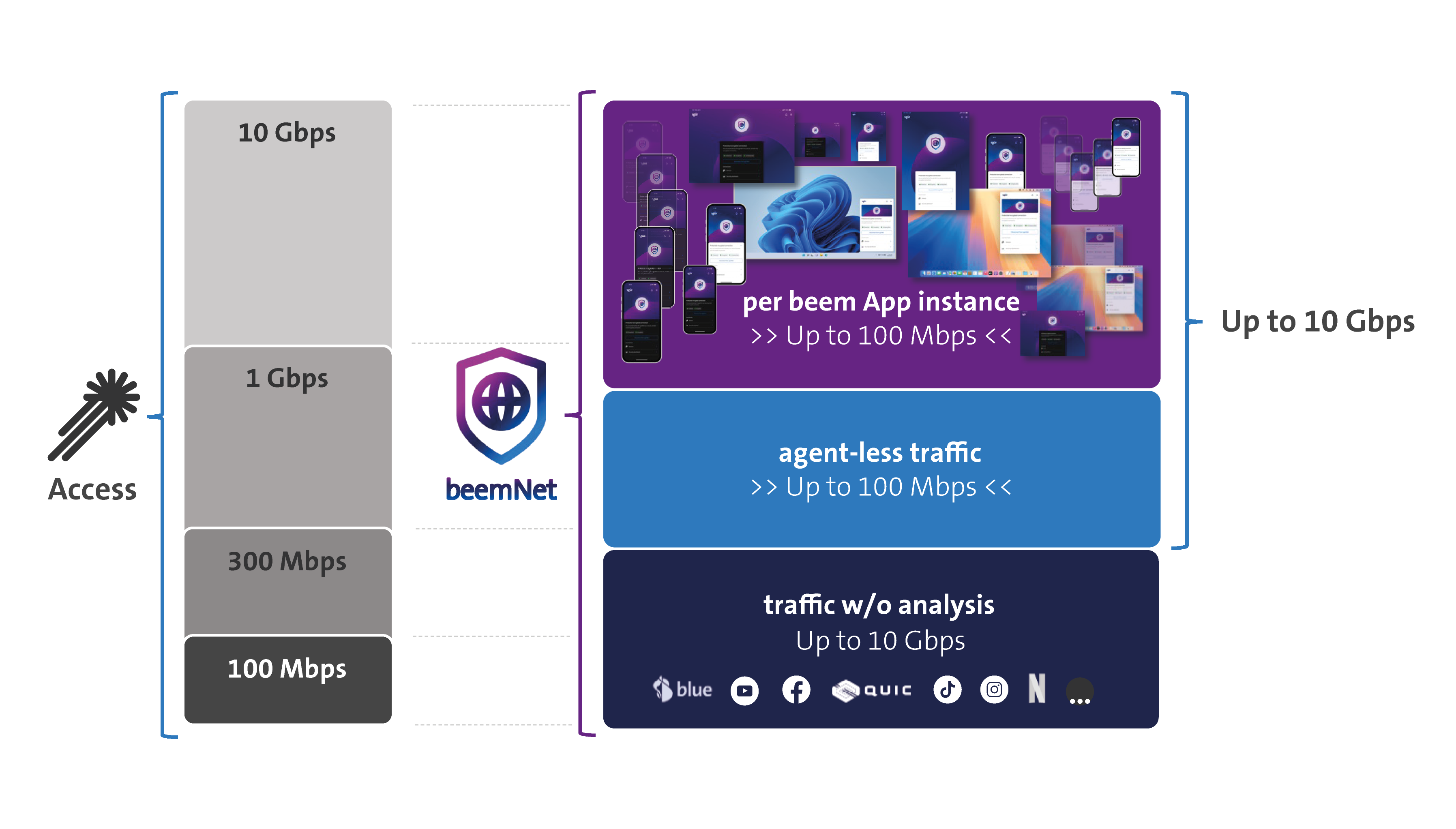beem App at Your Workplace Locations
There are compelling reasons to use the beem App even when connected to a local network (LAN with or without Wi-Fi) that already leverages Swisscom B2B broadband access integrated with beemNet. Similarly, integrating any Swisscom B2B broadband access with beemNet is beneficial, even though the beem App can provide protection across any network.
The beem app is available only on devices running modern client operating systems such as iOS, iPadOS, macOS, Android, or Windows. Devices like printers, TVs, smart speakers, and industrial equipment typically run embedded systems without app stores or user interfaces. As a result, these devices cannot be protected by the app itself, but they can still be secured through network-based protection provided by beemNet.
The app provides advanced security features, including encryption and device posture checks (such as verifying the device is up to date, has a screen lock available, and is free from harmful software), which are not possible without it. Also, while the beemNet VPN tunnel is active, the app can detect local network nodes or devices (e.g. printers) and route traffic locally when appropriate. In most cases, default settings are sufficient, provided local network access is allowed. For more complex requirements, beem administrators can configure advanced scenarios using features like split tunnelling.
Using the beem app also eliminates the need to manually manage the beemNet connection based on location or network changes, ensuring a smoother, more reliable experience.
For beem Essential customers, each instance of the beem app running on a local network connected to a Swisscom B2B broadband access with beemNet benefits from “dedicated” bandwidth and throughput, thanks to compute resource allocation in beemNet. While the total capacity is limited by the access speed at the location, beemNet's traffic management ensures greater per-user capacity on-premises when the beemNet VPN tunnel is active.
Consider the following scenario:
If 100 TVs stream 4K content (e.g., via blue TV) simultaneously, and each stream requires approximately 25Mbps, the total bandwidth needed is around 2.5 Gbps. Since beemNet classifies this type of traffic as safe, it is not analysed and therefore does not consume beemNet compute resources. A 10 Gbps access could support up to 400 such TVs streaming simultaneously. This demonstrates how beemNet can fully leverage high-speed broadband access to maximize efficiency and performance.
Currently, the beem Essential Security Edition allocates up to 100 Mbps per broadband access for agentless devices (those not using the beem app). While this may seem modest, it is sufficient for most real-world workloads of small to medium-sized companies. The same 100 Mbps peak allocations also applies to each running instance of the beem app with an active, encrypted connection. As more beem app instances are added to the local network, the total available capacity and throughput per location increase, provided the access speed can support it. The 100 Mbps allocation per instance represents a peak value, while actual average usage per device is typically substantially lower.
It is also important to note that most business applications are not designed to continuously utilize 100 Mbps per user. As such, a maximum capacity allocation of 100 Mbps per device provides ample headroom for the vast majority of real-world use cases.

INFO
In the higher-tier Security Editions (Basic, Plus, and Premium), beemNet uses a different approach to manage bandwidth and resources compared to the Essential Security Edition. This helps balance resource demand and supply more efficiently for each user.
